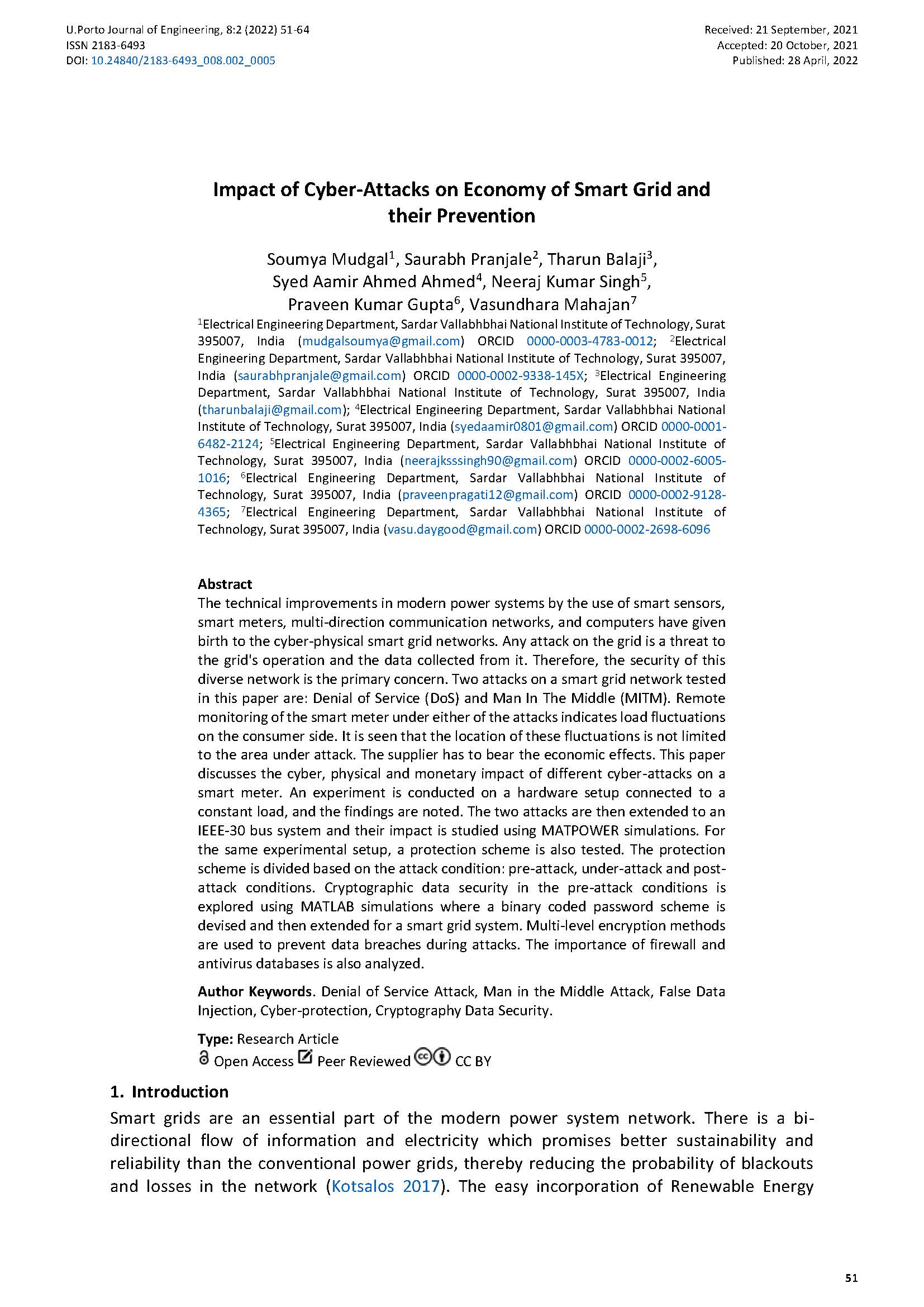Impact of Cyber-Attacks on Economy of Smart Grid and their Prevention
Main Article Content
Abstract
The technical improvements in modern power systems by the use of smart sensors, smart meters, multi-direction communication networks, and computers have given birth to the cyber-physical smart grid networks. Any attack on the grid is a threat to the grid's operation and the data collected from it. Therefore, the security of this diverse network is the primary concern. Two attacks on a smart grid network tested in this paper are: Denial of Service (DoS) and Man In The Middle (MITM). Remote monitoring of the smart meter under either of the attacks indicates load fluctuations on the consumer side. It is seen that the location of these fluctuations is not limited to the area under attack. The supplier has to bear the economic effects. This paper discusses the cyber, physical and monetary impact of different cyber-attacks on a smart meter. An experiment is conducted on a hardware setup connected to a constant load, and the findings are noted. The two attacks are then extended to an IEEE-30 bus system and their impact is studied using MATPOWER simulations. For the same experimental setup, a protection scheme is also tested. The protection scheme is divided based on the attack condition: pre-attack, under-attack and post-attack conditions. Cryptographic data security in the pre-attack conditions is explored using MATLAB simulations where a binary coded password scheme is devised and then extended for a smart grid system. Multi-level encryption methods are used to prevent data breaches during attacks. The importance of firewall and antivirus databases is also analyzed.
Downloads
Article Details

This work is licensed under a Creative Commons Attribution 4.0 International License.
Authors who publish with this journal agree to the following terms:
- Authors retain copyright and grant the journal right of first publication with the work simultaneously licensed under a Creative Commons Attribution License that allows others to share the work with an acknowledgement of the work's authorship and initial publication in this journal.
- Authors grant the journal the rights to provide the article in all forms and media so the article can be used on the latest technology even after publication and ensure its long-term preservation.
- Authors are able to enter into separate, additional contractual arrangements for the non-exclusive distribution of the journal's published version of the work (e.g., post it to an institutional repository or publish it in a book), with an acknowledgement of its initial publication in this journal.
- Authors are permitted and encouraged to post their work online (e.g., in institutional repositories or on their website) prior to and during the submission process, as it can lead to productive exchanges, as well as earlier and greater citation of published work (See The Effect of Open Access).

